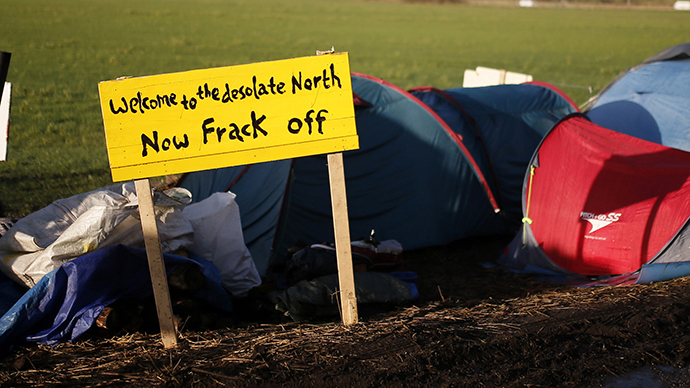Fracking – another commodity bubble of our times

Here’s a Dutch phrase for you, Gouden Eeuw. No, nothing to do with the currently controversial topic of cheese, it rather means Golden Age.
Nowadays, the Netherlands is best known for “whacky-baccy” and a liberal take on life – it is a significant trading economy but hardly a global leader. However, in the 17th century it was the USA of its day, the foremost economic and maritime power in the world in a time when size did not matter.
Holland did this by being the first European power to gain a foothold in Asia, including a monopoly on trade with Japan through the Dutch East India Company and dominating inter-European trade, fuelled by cheap energy from Windmills. Then everybody went nuts, completely insane actually or “krankzinnig” as they would say themselves.
The cause was flowers, tulips to be precise. Wealthy Dutch captains of industry invested their profits in acres and acres of tulip gardens to show off to “bezoekers” and by 1637, solitary bulbs were selling for ten times the annual income of skilled workers. Then one day, everyone realized they had seen all the colors and had tulip fatigue and just like that the bubble popped. Today you can purchase a bag of five bulbs for about €2 in Amsterdam.
Commodity bubbles have been frequent since, and while most modern insanities are real estate based, I could use the British railways mania of the 19th century, the Australian Poseidon (mining) in 1969 plus the dot-com frenzy of the late 1990’s as examples outside the main culprit. There’s a new hysteria at large now – fracking, something touched upon here a while ago.
Despite the turbulent geopolitical situation in the main production regions, the global oil price has fallen from around $115 a barrel only last month to just over $103 now. Meanwhile, because tight energy drilling is extremely capital intensive, US companies are borrowing cheaply in the junk bond markets to fund their drilling activities. A policy that makes loads of sense to speculators but sets off alarm bells for economists.

The problem with accessing credit is that both oil and shale gas wells deplete at a much faster rate than conventional wells (usually around 69% in year one and over 90% within 5 years). This forces companies to keep drilling to maintain the same rate of production, which is usually funded by the cheap tick I mentioned. Of course, the most productive fields have been drilled first and depleted swiftly so speculators now have no option but to drill in fields with less potential and which incur higher extraction costs.
Just to throw something more inflammable on the fire, there is a lot of iffy land leasing going on, with firms flipping holdings to take advance of soaring prices. Naturally, they are aware of rapid depletion rates for the wells and want to cash in before it happens.
When crude prices were only going up, this wasn’t a concern. But as they first plateaued and now begin to dive, the humongous amounts of debt are becoming a noose around the neck of fracking concerns.
Bad news for fracking operators
In 2008, the American analyst Jessie Colombo was hailed by the London Times for predicting that year’s US property market collapse which is considered to have kick-started the global economic crisis. At a mere 18-years-old, Colombo founded the website, Stock Market Crash!, in 2004 and correctly made a case for how the bubble would conclude. Colombo believes shale is headed in the same tragic direction.
“Surging North American oil production, courtesy of the recent US shale and Canadian oil sand booms is dramatically reducing US oil imports and has even led to a glut of light, sweet crude in the US. Our production is expected to grow to 9.6 million barrels a day by 2016, which would make the US the world’s largest oil producer, ahead of even Saudi Arabia and Russia,” he explains.
According to Colombo, this reversal of America’s long production decline has ensured that recent instability in the Middle East and Ukraine hasn’t affected oil prices. It sounds great in principle but it is bad news for fracking operators especially with countries like Iran, Libya and Venezuela poised to increase their production after years of sanctions in the first and political turmoil in the second pair.
“The high price of oil in the past decade enabled the shale boom because it made new drilling technologies viable. However, since 2011, because of the economic slowdown in China and other emerging economies, oil demand growth has tapered significantly. As US fracking enterprises need prices to rise for their bubble models to grow - this is extremely bad news for them.” Jesse cautions.
Looking at Colombo’s extensive figures, available on his excellent thebubblebubble.com website, it becomes clear that the shale frenzy is only slightly delaying the end of the cheap oil era. Excellent news for countries with easily extractable reserves but also surely great for price sensitive fracking projects? Jesse says that’s not the case because confidence in their racket will diminish before they see any benefits.
“In a zero-percent interest rate environment like we are currently experiencing, any boom can quickly devolve into a bubble. Shale extraction is very capital intensive and relies heavily on cheap credit to survive. Additionally, its entire existence is predicated on today’s fairly relatively high oil prices. If the price drops below $70-$80 a barrel, many shale companies will go bust in a very short space of time. Because of this, investors and lenders will go sour on fracking after taking serious losses,” he counters.

Markets are not known for either patience or joined-up thinking so this scenario would, ironically, lead to even higher oil prices in the long-term as shale capital is restricted when the hype dies down, leaving traditional producers in a stronger position than ever.
The profile of many of the investors state-side is also eerily redolent of Dot-Com madness of the 90’s. The Texas Governor Rick Perry’s son, Griffin, and his associates at Grey Rock Energy Partners are currently attempting to raise $200 million to take minority stakes in shale wells. Also, 27-year-old Mark Hiduke managed to raise $100 million for a three-week old company in May according to Bloomberg. Wonderful reading for expensive restaurants and hotels but hardly grounded in reality.
Meanwhile, The New York Times has previously leaked emails which included this ominous warning from a respected analyst: “The word in the world of independents is that the shale plays are just giant Ponzi schemes and the economics just do not work.”
All this investment is creating copious wells, at twice the price of ordinary ones, and because they are, first production is taking place at about the same time, the initial figures look great. This fuels further blind equity but then, as mentioned earlier, the output drops extremely fast.
Just like the housing bubble of the early years of this century, the fashion for fracking is also heading towards a cliff. Once the attractive spots have been milked, production will slump and many wells will not even take off at all, following the example of Poland where drilling dozens of wells has led to nothing.
It’s obvious that a few years from now, fracking will be seen as this period’s equivalent of the tulip and dot-com convulsions. The environmental legacy will be felt in the US for a considerable period, but markets will, doubtlessly, swiftly move on to the next fad. My bet is 3D printing, what’s yours?
The statements, views and opinions expressed in this column are solely those of the author and do not necessarily represent those of RT.
The statements, views and opinions expressed in this column are solely those of the author and do not necessarily represent those of RT.













